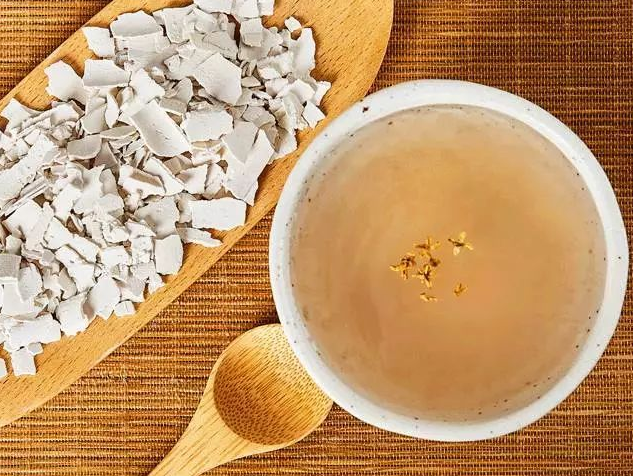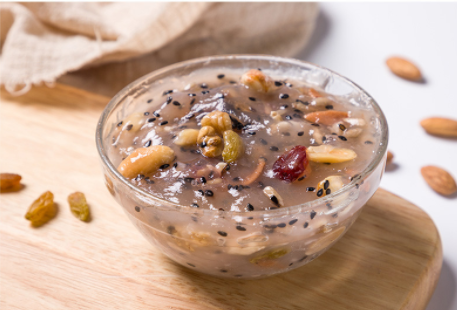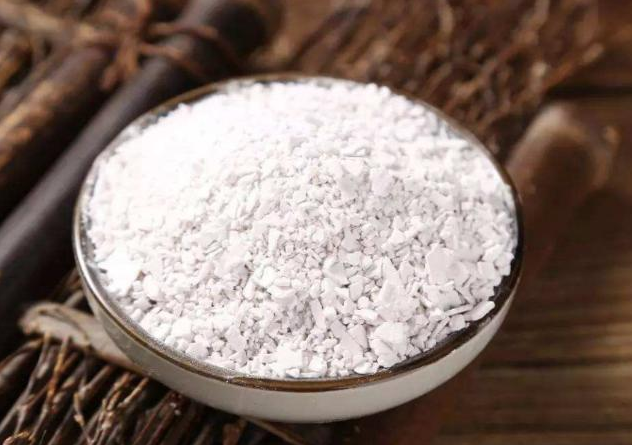Ⅰ. Traditional production process of lotus root noodles
1. Refining:
Wash the fresh lotus root, remove the lotus root joints, mash it in a beater or stone mortar, add water and grind the lotus root with a stone.
2. Pulp washing:
Put lotus root pulp in a cloth bag, put a tank or basin under the bag, rinse the bag with clean water, stir the lotus root residue in the bag while flushing, until the water is filtered out.

3. Bleaching:
Rinse the rinsed lotus root with water for 1 to 2 days, stirring once a day. After clarification, remove the fine lotus root dregs floating on the water surface, and remove the bottom layer of silt, then put the middle slurry in another container, dilute it with clear water and re-precipitate. Repeat this for 1 to 2 times until the lotus root flour is white.
4. Drain and roast:
Put the rinsed and settled lotus root flour in a clean cloth bag, then lift it with a rope, and it can be drained in about half a day (you can also put a clean cloth bag with plant ash into it to absorb the water) .After the water is drained, take out the lotus root flour, break it into a dough of about 500 grams, let it dry for about 1 hour, then use a knife to cut the dough into thin slices; continue to bake or dry to become lotus root flour. Generally, the powder extraction rate is about 10%.
When making lotus root flour, pay attention: it is better to take fresh old lotus root. The finer the lotus root is, the better, because the finer the ground, the higher the powder yield.
Ⅱ. Modern production technology of lotus root flour
Lotus root for processing-cleaning-crushing-filtration-desanding and purification-concentration and refining-dehydration-drying-packaging-finished product.

1. Selection of raw materials:
In order to ensure the powder extraction rate and starch quality, the raw materials selected during processing should be neat in appearance, uniform in thickness, normal in color, and the surface of the individual should be smooth and clean. Fresh mature lotus root without obvious defects is the raw material.
2. Cleaning:
The purpose of cleaning is mainly to remove the silt on the surface of the raw materials, which is a key section in the processing of lotus root flour, which is related to the purity and taste of lotus root flour.
3. Crushing and filtering:
The purpose of crushing is to destroy the tissue structure of the material, so that the tiny starch granules can be smoothly disintegrated and separated from the lotus root. Starch extraction, also known as slurry separation or separation, is a key link in starch processing and directly affects starch extraction rate and starch quality. Gudewei Potato Industry adopts the process of crushing-full elutriation-pressureless percolation-squeezing successively multi-stage cycle, which can complete the extraction of starch with less power and quick process.

4. Desanding and purification:
The main purpose is to further remove the sediment from the material.
5. Concentrated and refined:
Professionally designed for the properties of lotus root starch granules, it can concentrate the starch slurry and completely separate the non-starch components in the starch, so that the concentration of starch milk discharged from the last-stage cyclone reaches 23Be', and the whiteness and purity reach the standard. It is an ideal choice for starch washing equipment.
6. Dehydration:
The concentrated starch slurry still contains a lot of moisture, and the moisture in the material needs to be further removed before it can enter the drying section. Three-foot dewatering machine can be used for dehydration, and scraper centrifuge can be used for large factories.
7. Drying:
Drying adopts airflow drying. The airflow dryer uses high-speed hot airflow to suspend wet starch in it and dry it during the airflow process. It has the characteristics of high heat transfer coefficient, large heat transfer area and short drying time.
8. Starch cooling and sieving packaging:
After the starch is dried, the temperature is higher. In order to ensure the viscosity of the starch, it is necessary to quickly cool the starch after drying. Using a cold air system, the equipment has the advantages of low energy consumption, good cooling effect, stable operation, and large processing capacity. The cooled starch enters the finished product sieve, and enters the final packaging process under the premise of ensuring product fineness and output.
The above wonderful content is the sharing of The production process of lotus root flour by Henan Zhongxing Grain and Oil Machinery Co., Ltd. If you need powder processing equipment, you can contact us at any time.
Copyright © Henan Zhongxing Grain And Oil Machinery Co.,Ltd. All Rights Reserved. Powered by MetInfo